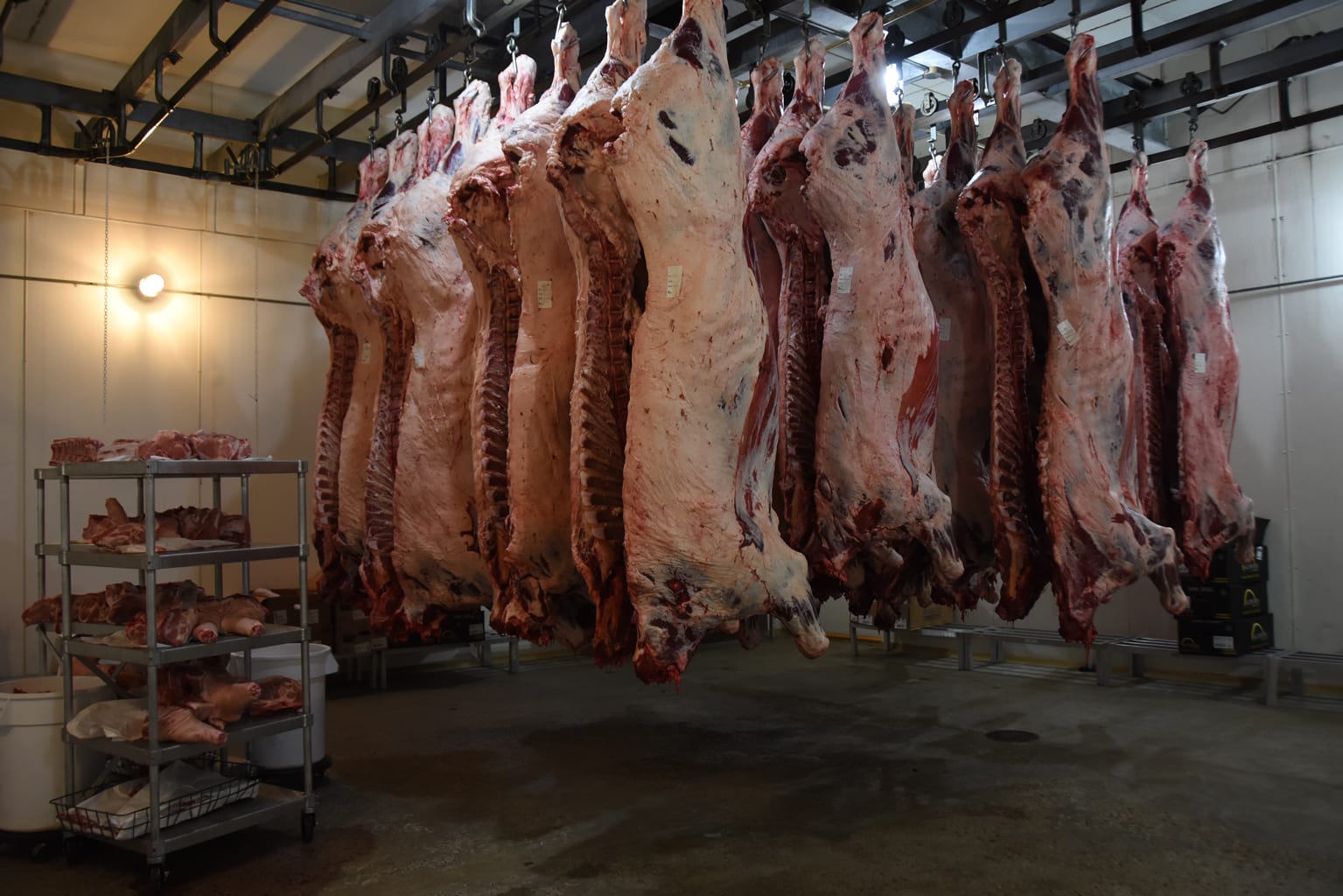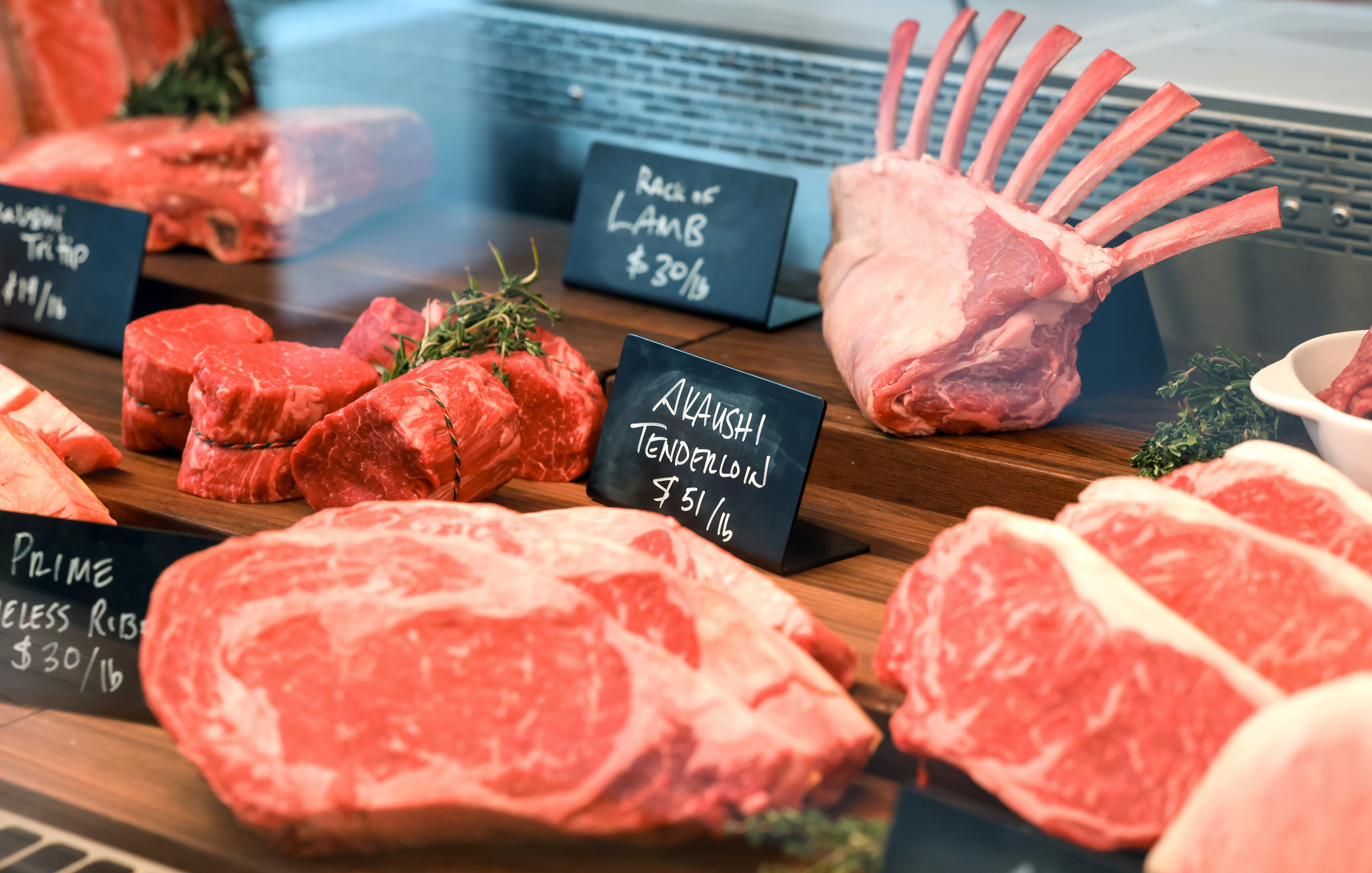Reveal the Art of the Butcher's Cut in a Modern Meat Market
In the ever-evolving landscape of modern meat markets, the butcher's cut has actually transcended its conventional origins, combining olden craftsmanship with contemporary practices. bagley farms meat market edwardsville il. Today's butchers are not just processors of meat; they are well-informed artisans who highlight sustainability and ethical sourcing. Their expertise in choose and preparing cuts tailored to details culinary requirements uses an unparalleled eating experience. What absolutely sets the modern butcher apart is their capacity to create a much deeper connection between consumers and the beginnings of their meat. Exactly how do these masters equilibrium custom with development, and what effects does this have for the future of meat consumption?
Evolution of Butchery Strategies

The mid-20th century saw butchery techniques further improved by clinical insights into muscular tissue biology and meat aging, boosting both inflammation and taste. Developments like vacuum product packaging and refrigeration prolonged product shelf-life, allowing butchers to expand offerings and enhance quality assurance. This period additionally noted the rise of customized tools, such as band saws and meat slicers, which boosted precision and performance in meat handling.
The 21st century has presented electronic innovation right into the butchery world. Computerized systems currently help in tracking pet provenance and enhancing cuts to meet details client choices. Furthermore, a revival in artisanal butchery has actually emerged, blending standard skills with contemporary knowledge to deal with consumers looking for ethical and lasting meat choices. This evolution emphasizes a dynamic interaction between custom and advancement, meeting modern needs while protecting the craft's heritage.

Understanding Meat Cuts

Comprehending the ins and outs of meat cuts is essential for both butchers and consumers seeking high quality and value. Each cut comes from a various component of the pet, imparting distinct flavors, structures, and food preparation approaches. Mastery of these differences not only boosts culinary experiences but likewise makes best use of the energy of each carcass. For butchers, precise cuts reflect ability and regard for the craft, guaranteeing very little waste and optimal yield.
The primary classifications of meat cuts consist of primal, sub-primal, and retail cuts. Butchers after that break these down additionally right into sub-primal cuts, before ultimately producing retail cuts readily available to consumers, like ribeye or tenderloin.
Recognizing muscle structure is essential; muscular tissues used more often by the pet have a tendency to be Clicking Here harder and are best matched for slow food preparation approaches, while less-used muscle mass, like those found in the loin, are a lot more tender and suitable for cooking or roasting. Familiarity with these differences equips customers to make informed options, boosting their culinary endeavors.
Selecting Quality Meat
Selecting the best meat includes more than simply selecting an aesthetically attractive piece from the display. The art of picking top quality meat needs a discerning eye and knowledge of specific features that symbolize freshness and excellence.
Second of all, take into consideration the marbling, which describes the white streaks of fat within the muscle. Proper marbling is an essential sign of tenderness and taste, as it thaws throughout cooking, boosting the meat's juiciness. Bear in mind, greater marbling often associates with exceptional high quality cuts, such as USDA Prime.
Appearance is another essential variable; meat must really feel strong to the touch, not slimy or excessively soft. Additionally, bear in mind the aroma. Fresh meat must have a tidy, neutral scent, devoid of any sour or repulsive odors.
Combining Cuts With Cooking Techniques
Efficiently matching cuts of meat with the ideal cooking techniques is important for attaining optimal flavor and appearance. Different cuts vary in inflammation, marbling, and connective cells content, each needing details techniques to open their possibility. As an example, tender cuts like filet mignon and ribeye, with their integral marbling, gain from high-heat, quick-cooking methods such as barbecuing or pan-searing. These methods improve the meat's all-natural flavors and guarantee a juicy surface.
On the other hand, harder cuts like brisket and chuck roast are abundant in collagen, which damages down right into gelatin when cooked gradually. These cuts are perfect for braising or slow-moving roasting, enabling the meat to soften gradually and develop deep, complicated flavors. Similarly, cuts such as short ribs and pork shoulder fare well with slow-cooking techniques, where extended cooking times change their durable appearances into delicious recipes.
Lamb shanks and oxtail, which need prolonged cooking to tenderize, are perfect candidates for cooking or slow-moving simmering. These approaches coax out abundant, passionate flavors while preserving moisture. By comprehending the distinct qualities of each cut, chefs and home cooks alike can elevate their cooking productions, ensuring each recipe is both satisfying and remarkable.
The Butcher's Role Today
Browsing the evolving landscape of the modern meat market, the butcher's role today expands past simple preparation of cuts. Contemporary butchers are cooking craftsmens, educators, and advocates for sustainable practices. They connect the void between the farm and the Check Out Your URL fork by guaranteeing moral sourcing, understanding animal husbandry, and focusing on openness in the supply chain. This change shows the growing consumer need for high quality over quantity, where provenance and pet well-being are extremely important.
In enhancement to crafting precise cuts, butchers Discover More currently involve directly with clients, offering cooking guidance and customizing selections to fit specific needs and preferences. Their expertise in meat aging, marbling, and flavor profiles equips consumers to make enlightened decisions, boosting their culinary experiences. This customized solution exemplifies the butcher's advancing duty as a relied on consultant in the cooking area.
In addition, butchers are critical in lessening waste, using entire pets to create varied products such as sausages and supplies - bagley farms meat market edwardsville il. This extensive technique not just values the animal but also lines up with contemporary sustainability objectives. This way, the modern-day butcher embodies both tradition and development, adapting to an ever-changing market while protecting the virtuosity and honesty of their craft

Conclusion
The modern butcher's craft elaborately weaves conventional techniques with modern innovations, stressing lasting practices and moral sourcing. Proficiency in understanding varied meat cuts and high quality signs empowers butchers to supply informed referrals, straightening details cuts with optimal cooking methods. This competence not just elevates cooking experiences however additionally enhances the connection in between customers and the beginnings of their food. By honoring historic methods while accepting contemporary needs, the butcher's duty remains important in today's advanced meat market.